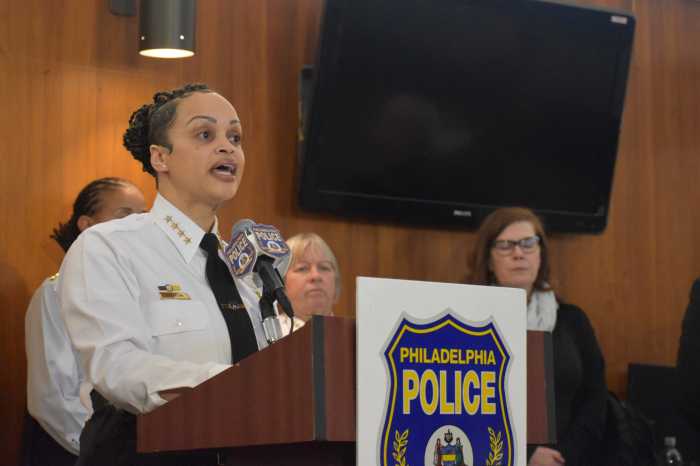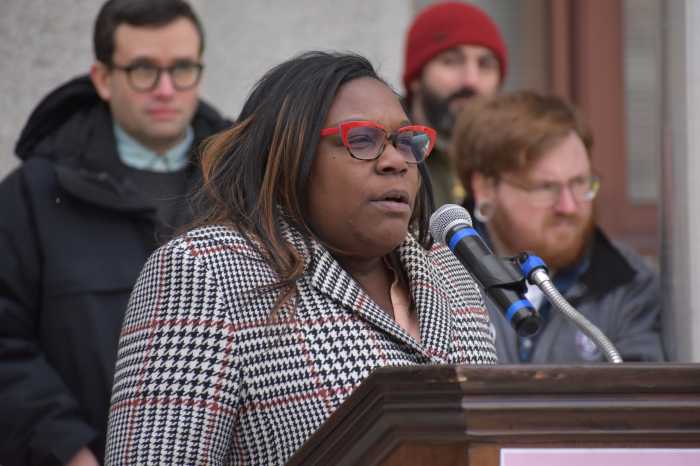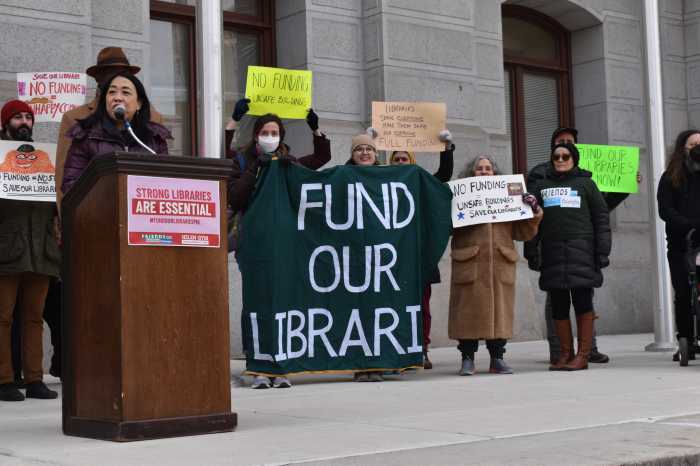During a hearing Monday, Philadelphia’s top violence prevention official was questioned about a report that found staff working at a key intervention program were “not on the same page.”
The audit, commissioned by the city and released in late October, found a disparity between the Community Crisis Crisis Intervention Program’s core strategies and what outreach workers were actually doing on the street.
“While what we received from the process evaluation was not necessarily a gold star, what we do realize is that it gets us on the right track,” Erica Atwood, senior director for the city’s Office of Policy and Strategic Initiatives for Criminal Justice, told City Councilmembers.
Atwood said her team is prioritizing hiring a dedicated executive director for the program and providing additional staff training.
“I just need to emphasize that hiring the executive director cannot be a priority for Phase II evaluation,” Councilmember Helen Gym responded. “It just can’t.”
The exchange occurred during a virtual meeting to examine the direct and indirect costs of crime, and happened the same day as Mayor Jim Kenney published an op-ed in the Inquirer saying combating violence will be his No. 1 priority heading into his final year in office.
Hiring a director for CCIP, which attempts to reach out to potential shooters and shooting victims, was one of five recommendations stemming from the report.
“If we don’t put some level of consistent oversight on it, what we know is priority, who then is really paying attention to it?” Atwood told Council. Gym argued the focus should be on providing timely services and supporting staff.
CCIP is administered by the Philadelphia Anti-Drug/Anti-Violence Network (PAAN), and the city will also soon be contracting with two additional organizations, Eddie’s House and the Institute for the Development of African American Youth.
The program has been touted by the Kenney administration as an integral non-police initiative to reduce the city’s level of gun violence, which peaked in 2021 and is on a similar track this year. More than 2,000 people have been shot in 2022, and 459 have been victims of homicides.
“Reducing gun violence demands creativity, cooperation, and tireless dedication from those of us who are privileged to serve as elected leaders,” wrote Kenney, who also used the article to spotlight positive developments, including a booming life sciences industry and the opening of new restaurants.
Councilmember Curtis Jones Jr., who spearheaded Monday’s hearing, asked officials to build a model to calculate a dollar amount attached to crime, accounting for the ripple effects of incarceration, prosecution and other factors.
A third of the city’s budget, Jones noted, is spent on public safety, from the police and fire departments to the prison and court systems.
Few of those who testified at the hearing had specific numbers for him, but Atwood said that, in 2022, Philadelphians have been charged $267.4 million in hospital fees relating to gun violence.
Chief Defender Keisha Hudson told lawmakers that about 30% of the city’s jail population are locked up awaiting court proceedings because they cannot afford bail. Research has shown that someone incarcerated for more than three days struggles with employment, housing costs and supporting their family, she added.
A representative from the City Controller’s Office, Nick Hand, mentioned a 2019 report that analyzed all homicides between 2006 and 2018 and measured the effect on Philadelphia home values.
The study found that a murder within three-quarters of a mile lowers a property’s sale price by 2.3%, and a 10% reduction in homicides would lead to a $13 million increase in real estate tax revenue.
Compiling the monetary loss associated with shootings and homicides would provide Council with information about where to invest dollars on the front end, instead of dealing with ballooning costs on the back end, Jones said.
“If it ain’t measured, then it ain’t managed,” he said. “We want to do good, but we always must know how much doing good costs.”





























